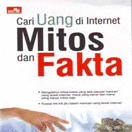Before applying the scientific approach to the study of the markets, a number of
things must be considered. First, a universe of reliable market data on which to
perform back-testing and statistical analyses must be available. Since this book is
focused on commodities trading, the market data used as the basis for our universe
on an end-of-day time frame will be a subset of the diverse set of markets supplied
by Pinnacle Data Corporation: these include the agriculturals, metals, energy
resources, bonds, currencies, and market indices. Intraday time-frame trading is
not addressed in this book, although it is one of our primary areas of interest that
may be pursued in a subsequent volume. In addition to standard pricing data,
explorations into the effects of various exogenous factors on the markets sometimes
require unusual data. For example, data on sunspot activity (solar radiation
may influence a number of markets, especially agricultural ones) was obtained
from the Royal Observatory of Belgium.
Not only is a universe of data needed, but it is necessary to simulate one or
more trading accounts to perform back-testing. Such a task requires the use of a
trading simulator, a software package that allows simulated trading accounts to be
created and manipulated on a computer. The C+ + Trading Simulator from
Scientific Consultant Services is the one used most extensively in this book
because it was designed to handle portfolio simulations and is familiar to the
authors. Other programs, like Omega Research’s TradeStation or SystemWriter
Plus, also offer basic trading simulation and system testing, as well as assorted
charting capabilities. To satisfy the broadest range of readership, we occasionally
employ these products, and even Microsoft’s Excel spreadsheet, in our analyses.
Another important consideration is the optimization of model parameters.
When running tests, it is often necessary to adjust the parameters of some component
(e.g., an entry model, an exit model, or some piece thereof) to discover the
best set of parameters and/or to see how the behavior of the model changes as its
parameters change. Several kinds of model parameter optimizations may be con
ducted. In manual optimization, the user of the simulator specifies a parameter that
is to be manipulated and the range through which that parameter is to be stepped;
the user may wish to simultaneously manipulate two or more parameters in this
manner, generating output in the form of a table that shows how the parameters
interact to affect the outcome. Another method is brute force optimization, which
comes in several varieties: The most common form is stepping every parameter
through every possible value. If there are many parameters, each having many possible
values, running this kind of optimization may take years. Brute force optimization
can, however, be a workable approach if the number of parameters, and
values through which they must be stepped, is small. Other forms of brute force
optimization are not as complete, or as likely to find the global optimum, but can
be run much more quickly. Finally, for heavy-duty optimization (and, if naively
applied, truly impressive curve-fitting) there are genetic algorithms. An appropriate
genetic algorithm (GA) can quickly tind a good solution, if not a global optimum,
even when large numbers of parameters are involved, each having large
numbers of values through which it must be stepped. A genetic optimizer is an
important tool in the arsenal of any trading system developer, but it must be used
cautiously, with an ever-present eye to the danger of curve-fitting. In the investigations
presented in this book, the statistical assessment techniques, out-ofsample
tests, and such other aspects of the analyses as the focus on entire portfolios
provide protection against the curve-fitting demon, regardless of the optimization
method employed.

















Tidak ada komentar:
Posting Komentar
Catatan: Hanya anggota dari blog ini yang dapat mengirim komentar.